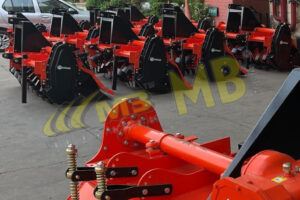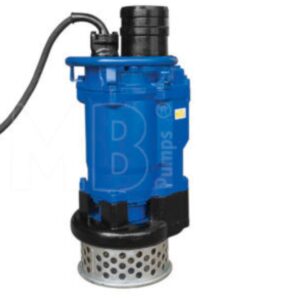A centrifugal pump: what is it?
An electrical motor and a pump are the two primary components of an automatic system known as a centrifugal pump. The impeller, which is the essential part of a centrifugal pump, rotates quickly on an axis. When it is operating, applying centrifugal force to the fluid and allowing it to pass through the pump casing and out the suction outlet. The impeller has curved vanes and shroud plates and is constructed of cast iron, which is extremely resistant to corrosion. Unless the pump system is self-priming already, a centrifugal impeller will usually always need to be completely submerged in water in order to permit priming during operation.
A centrifugal pump operates at low to medium pressure head and employs a rotary impeller design, setting it apart from many other pump types that are typically classified as positive displacement pumps. These pump types frequently use reciprocating designs or diaphragm pump systems to transfer fluid.
Since centrifugal pumps can transfer more fluid than any other pump type available on the market, they are a very adaptable pump system that is widely utilised in many industries for both home and commercial purposes. They are also available in a wide range of sizes, forms, and materials, including self-priming, ATEX, industrial, sanitary, and self-priming versions. MB Exports is the best dewatering pump accessories exporter in India.
What’s Going on with a Centrifugal Pump?
Any centrifugal pump’s basic operation involves a fluid entering the pump inlet, moving toward an impeller shaft, and rotating exponentially along the pump casing’s impeller vanes before the fluid is forced out to the discharge side. The process is then repeated, this time directing additional fluid through the pump inlet to ensure accuracy, control, and repeatability.
Various Centrifugal Impeller Types
Open, semi-open, and enclosed impeller pump types are the three main types of impellers that are commonly available for various applications.
To allow fluid to pass smoothly through the impeller shaft in abrasive applications or those containing suspended materials, an open impeller is typically used. They are, however, marginally less efficient since the liquid is combined with the liquid that has already passed through to the pump casing nearly immediately.
A shroud wall is used in a semi-open impeller type to strengthen the vanes while keeping one side open. The semi-open variant can be utilized for fluids that contain partial solids, just like the open impeller type.
Types of Centrifugal Casings
There are two primary alternatives for the casing surrounding the impeller of a centrifugal pump: a diffuser and a volute design.
The curved design of a volute centrifugal pump produces a chamber in which the fluid is guided towards the outlet pipe as the flow increases continuously. Guide vanes on the outside of the impeller of a diffuser casing boost pressure and diffuse the liquid, resulting in a much more regulated operation.
Key Features of a Centrifugal Pump
The versatility of centrifugal pumps is immense. There is a Centrifugal Pump solution available whether you need your pump to be driven electrically or magnetically, to self-prime, to be able to handle sanitary fluids or to be large enough for large industrial applications. They are available in a wide variety of shapes and sizes to handle a wide variety of installations and requirements.
When opposed to pneumatically powered pumps, centrifugal pumps have the advantage of being extremely energy-efficient, making them perfect for high-flow applications.
One further important aspect of them is that they are easily adjustable to meet the various needs of the final user. To get the ideal pump solution, for instance, accessories like heated jackets, self-priming chambers, and hygienic shrouds can be used.
Application of Centrifugal Pumps
As previously indicated, centrifugal pumps are useful in many different industries for a range of purposes. Some of the most popular uses for these pumps are as follows, but they’re not exclusive to:
- Wastewater Treatment
- Surface Conditioning
- Food & Beverage
- Pharmaceutical
- Cosmetics
- Heavy-duty industrial applications
Conclusion
In conclusion, centrifugal pumps are indispensable tools in various industries due to their efficiency, versatility, and adaptability. With their ability to handle different fluids and applications, from wastewater treatment to pharmaceutical production. These pumps play a crucial role in ensuring smooth operations across diverse sectors. Their wide range of configurations and accessories make them suitable for a multitude of tasks. Highlighting their significance in modern industrial processes. MB Exports is the best Dewatering Pump Manufacturers in India.
Read more about The Different Types of Dewatering Pumps and Their Applications.




